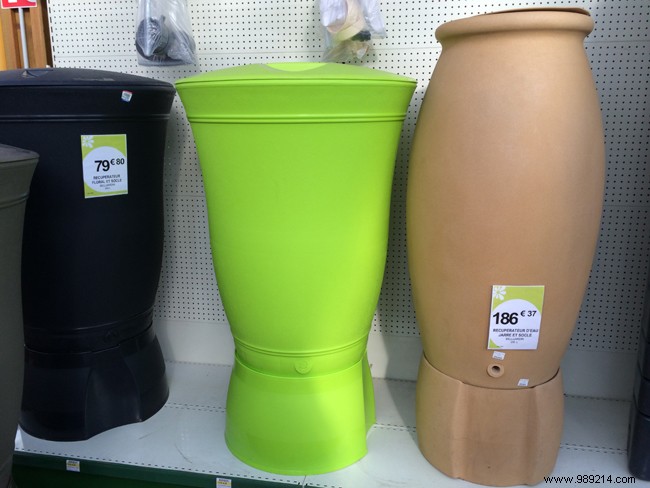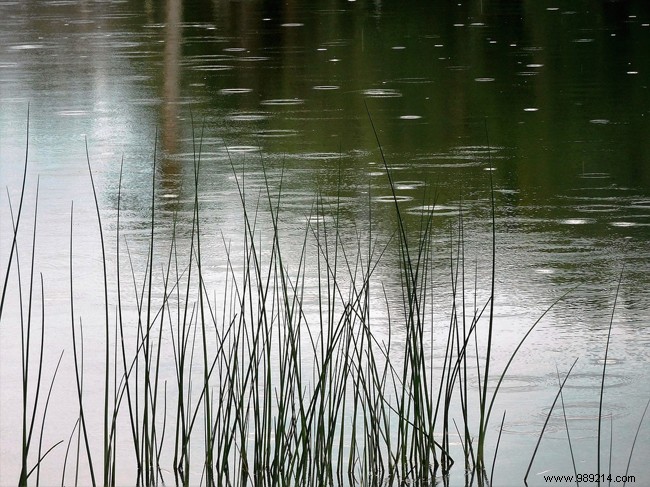
Collecting and storing rainwater for later use are ancient practices still used in many rural areas around the world, and today it is making a big comeback in our industrialized countries.
In its simplest form, rainwater harvesting involves using a barrel placed under your house's gutters to collect water and use it for garden irrigation. Larger, more sophisticated systems can be integrated into your home's plumbing system to provide water for a variety of household needs, from toilet flushing to laundry.
To collect rainwater, you can buy a water storage barrel. A rain barrel can also be made from a large plastic trash can. However, it should be noted that it is cheaper to obtain a barrel that has already been used by a company that, for example, uses large barrels to store food and other goods. The barrel should be thoroughly cleaned with soapy water. If you opt for a used barrel, make sure it has not been used before to store oil, pesticides, or any other type of toxic substance. These chemicals are difficult to clean, so using them can be risky. If you plan to collect a lot of water, take two or three barrels. You will be able to link them so that they are all part of the same water collection system, and this way you can have a good amount of water at your disposal.
You can also opt for an underground tank. Indeed, there are rainwater storage tanks. These underground tanks are designed to hold good volumes of water while keeping excavation depth to a minimum. The tanks are made of virgin polyethylene plastic, which allows for non-concrete base and backfill installation. The tanks are pre-equipped with a required calming inlet, filter in the tank and a telescopic neck with the pedestrian cover. The tank has three taps used for rainwater inlet, overflow outlet and the third as a service conduit.
The easiest way to collect rainwater is to build a barrel platform yourself. To do this, you first need to level an area right next to your descent. The downspout is the metal or plastic tube that runs from your roof gutters to the ground. You will redirect the descent directly into your barrel. You must therefore prepare a platform in the sector just next to it. Clear rocks and other debris from the area. If the ground is uneven, take a shovel and scoop out the dirt to flatten an area large enough to place the barrel(s) you plan on.
If your downspout empties onto a concrete driveway or patio located on a domed section, build a level surface by stacking a few plywood boards in the low section so you'll have a level area to place the barrels on. If you have more than one downspout on your house, choose to place the barrel near the one closest to your garden, so that the water you collect doesn't require too long of a trip when it's used.

If you have a flower or vegetable garden, use the contents of your rain barrel to water them. However, since rainwater can contain heavy metals and pesticides, avoid watering the top of your vegetables. This will prevent contaminating the edible part above ground. This is especially true for leafy greens. And, as always, be sure to wash your vegetables thoroughly with clean water before consuming them.
Rainwater is also a great option for washing your car and windows. Since it's soft water, it won't harm your car's paint or damage your windows. And, you'll save some of your precious tap water for other uses.
Using rainwater for toilets can also save you a lot of money on your water bill. In fact, this system can save many m3 of water every year. So, if you live in a rainy country, it could be a very cost-effective alternative to save clean water and can also reduce your water expenses.
Do not drink rainwater because most of this water comes straight from your roof, which can contain a lot of dirt, not to mention that in contact with gases and particles in the air, it can contain heavy metals and pesticides, in particular.